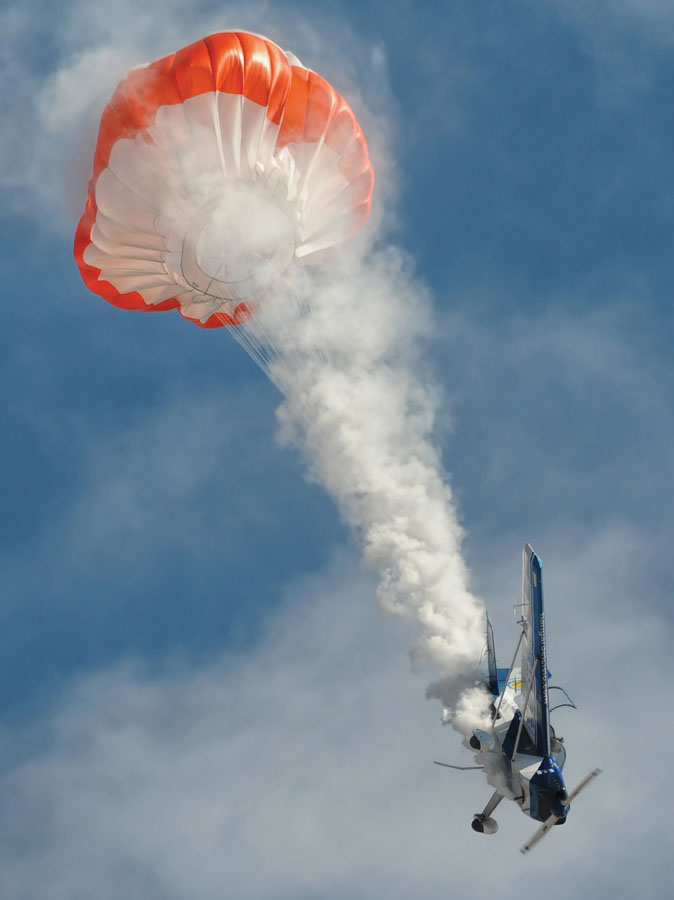
Still chilled from the preflight, I rubbed my hands together and turned up the heat after leaving the traffic pattern. Hot air flooded the tiny Pulsar cabin. I looked out the canopy to see an expanse of pine-covered mountains and valleys of multicolored icy mist. Always thinking about emergencies, I thought about an engine-out landing in this most beautiful but hostile terrain.
“Not good,” I said aloud to myself.
I began thinking about what I would do. Two hundred twenty hours on the Pulsar. Two hundred seventy hours on the pilot. Rocky, tree-covered terrain. Worse, what if I had a structural failure? Hmm. Stop thinking about those things on an exhilarating flight in the early spring over fabulous landscape.
As pilots, we are trained to think of the worst that could happen and what our course of action will be in the hope that we can extricate ourselves. Aircraft are built on redundant systems for that reason. It’s OK to think about, I reassured myself. Then I became absorbed in my flight and also in the delight of another stunningly beautiful experience in my new homebuilt on a New York to Maine cross-country.
I returned to my “what could go wrong” thoughts when I was choosing my next aircraft kit. The Kolb Mark III Extra, a two-place tube-and-fabric airplane with a pusher prop, had a whole aircraft ballistic recovery ‘chute option from BRS Aerospace, which I decided to research and consider.
The Kolb in the foreground is equipped with a BRS installation. Note the cannister that contains the ‘chute. (Photo: Courtesy of Kolb Aircraft Co.)
BRS Aerospace
Parachutes for aircraft are a fairly recent development in aviation. The inventor, Boris Popov, nearly died in 1975 in an accident in a towed hang glider. At 400 feet, the tow boat misread Boris’ hand signals and sped up instead of slowing, resulting in Boris falling 400 feet into the water and miraculously surviving the fall. Nothing like lots of adrenaline and a near-death experience to turn you into an inventor.
Popov designed a parachute system that could lower an entire light aircraft to the ground in the event of loss of control, failure of the aircraft structure, or other in-flight emergencies. Popov was granted a United States patent on August 26, 1986. Since then, the market has grown vigorously, and now parachutes have become standard equipment on many certified, Light Sport, and experimental aircraft. More installations are coming on new and larger aircraft, such as the Icon A5 amphibian, the Kestrel turboprop, and even the Cirrus Vision jet.
BRS Aerospace’s whole airplane parachute system design calls for a ballistic launcher to be installed in the aircraft with a pilot-initiated activator located in the cockpit. Upon activation, a rocket propels the parachute into the airstream to expand and slow the airplane, carrying it down to a survivable vertical landing.
According to Enrique Dillon, director and president of BRS Aerospace in the Miami, Florida, office, “BRS systems have been installed in over 35,000 aircraft, both new and retrofits, including Light Sport Aircraft, experimentals, ultralights, unmanned vehicles, military aircraft, and FAA/EASA type-certified aircraft. BRS worked hand-in-hand with Cirrus Design to develop the Cirrus Airframe Parachute System (CAPS), now standard on every Cirrus SR20 and SR22.” In the kit aircraft world, BRS Aerospace has developed installations for more than 350 models from a wide range of manufacturers, including CubCrafters, Glasair, Kitfox, Lancair, RANS, Sonex, Van’s, and Zenith.
BRS Aerospace claims 383 pilots and passengers have survived by using their system to date. The Cirrus Owners and Pilots Association (COPA) counts 95 ‘chute survivors in 46 Cirrus pulls with CAPS. BRS Aerospace has manufacturing facilities at the South St. Paul Municipal Airport in Minnesota and in Pine Bluff, North Carolina.
Magnum Ballistic Parachutes
Although BRS Aerospace took early advantage of the experimental aircraft market, soon others saw the same opportunity. In 1990, Josef Straka, of the Czech Republic, formed a group to develop recovery systems for light aircraft, bringing Stratos Magnum Systems products to the United States in 2006. Known now as Magnum Ballistic Parachutes, the company delivers to an important niche market—Light Sport. Dennis Carley, of U-FLY-IT Light Sport Aircraft, LLC in DeLand, Florida, says, “Stratos [in Europe] has continued to manufacture, develop, and test ballistic parachute systems for a wide variety of ultralight, Light Sport, and experimental aircraft, as well as hot air balloons. The Magnum systems are state-of-the-art ballistic parachutes installed by aircraft manufacturers in Europe, the United States, and numerous other countries. Systems are available for aircraft up to 3960 pounds gross weight and deployment speeds of up to 199 mph.”
Dennis went on to say, “You can always think of a reason not to put a parachute system on your aircraft, but every single one of those reasons is completely invalidated the moment you need a parachute.”
Magnum Parachute Systems are available in a wide variety of configurations, including softpacks, canisters, and systems mounted externally on the top of the wing, deploying vertically. The company offers loaner ‘chutes when you need a repack, about every six years.
Galaxy Rescue Systems
Another company expanding from Europe into the U.S. market is Galaxy Rescue Systems, or GRS. “Galaxy builds the world’s fastest deploying whole plane parachute in either high-speed or low-speed events,” said Bill Canino, president of SportairUSA LLC, located in North Little Rock, Arkansas. “The GRS system for light sport aircraft opens in less than 5 seconds, at maximum speed or at stall speed, enabling deployment as low as 270 feet agl.”
The GRS system differs from other ballistic ‘chutes in that it powers the unpacked parachute to the end of its tether and then continues, under power, to draw the ‘chute from its softpack, providing reliable deployment and rapid clearance from the aircraft and any debris field. The rocket assembly then departs the main ‘chute and continues on its way, deploying its own smaller parachute to carry it safely to the ground.
Bill’s enthusiasm was overflowing as we spoke about the GRS systems that they sell. “I can give you lots of reasons to fly with a whole plane ‘chute,” he said, and quickly listed many of them, such as power-outs over difficult terrain, structural malfunction, pilot disorientation, emergency water landings, and mid-air collisions. “I can’t think of a single reason why you wouldn’t want to invest in this lifesaver.”
Bill also mentioned that systems are available for rotorcraft. I was surprised. He said that the rocket fires sideways and can’t get entangled in the rotors. I thought back to the time when I was beginning my Rotorway kit 12 years ago, thinking about how an emergency parachute would be out of the question. The advances in the technology amazed me.
Should You or Shouldn’t You?
Here are the things you should think about when making the decision to buy and install a whole aircraft parachute system in your experimental aircraft project. I’ll use the term “WARPS” (Whole Aircraft Rescue Parachute System), coined by BRS Aerospace, to mean a recovery system for the entire aircraft. Over time I expect the names for these systems will sort out and, like “Kleenex,” we will all use one acronym for the device. In spite of BRS Aerospace coining “WARPS,” most of us are calling the systems simply “BRS.”
In that moment when you pull an emergency ‘chute handle, you give up every semblance of control of your aircraft, and you are now along for the ride, whatever it brings. You’ve made the decision that your life can be saved, knowing that the aircraft surely will be damaged in the process. If the system deploys successfully, it will lower you and your aircraft at the rate of about 1600 feet per minute, or about 27 feet per second. This is around 18 miles per hour, so the engineering for attitude of the aircraft and the crushability and protection of structure under you is pretty important.
First, some myths and some facts.
“A skilled pilot does not need a parachute in an emergency.” This is 90% myth. Encountered with a serious structural failure, such as the loss of a wing, even the best trained pilot is going to have difficulty saving the airplane. The part that’s 10% true has to do with the ability of a highly trained pilot to deal with emergencies. With non-structural failures and engine-outs, sometimes calm and competence can mean a very safe landing over areas where a landing is possible. But the fact is, skills deteriorate quickly in serious emergencies.
“Just take along your own parachute, it’s cheaper and simpler.” This also is 90% myth. Yes, it is cheaper, but unless you have the ‘chute fastened properly to your body, it will, unlike the James Bond tricks, be impossible to grab and don your parachute properly and exit the aircraft safely all at the same time in a crisis. The 10% true part? James Bond tricks—you never know.
“There is absolutely no downside to a whole aircraft recovery parachute. It will save you in all circumstances.” At least 20% myth. A recovery system is absolutely a great addition to the aircraft. But gravity plus physics dictate that at very low altitudes, the deployment may not help much. The majority of airplane crashes occur during landing, takeoff, and low-level flight. A stall turning to final with a spin is a common and mostly fatal accident where having a whole plane ‘chute may not save the occupants.
BRS Aerospace says any crash energy mitigation by deploying the ‘chute is good. I believe this, but there is only so much the system can do at very low altitudes. The discussion of risk gets complicated when you consider that a variety of things could go wrong with the system, such as inadvertent entanglement in the prop, being impaled by a tree on landing, etc. OK, let’s not think about it.
Decisions, Decisions, Decisions
So back to our original question: What are the things you should consider when making the choice to add or not add an emergency ‘chute to your aircraft project?
• Does your kit manufacturer and/or the plans for your craft include a ‘chute option? If so, then the decision is more a monetary and personal one. The installation should go smoothly. If you decide for it, like I did with my Kolb, it is very easy to add.
• Installing a WARPS will add 22 to 28 pounds to your project. Do the calculations and decide if you can live with flying with reduced cargo and/or space. Extra weight will also drive up your fuel costs and may change some of the aircraft’s flight characteristics.
• Does having a WARPS mean extra maintenance? Yes, but not as onerous as you might think. BRS Aerospace says that the only maintenance is repacking the ‘chute every 10 years and replacing the rocket. Every five years a small device called a line cutter must be replaced. Magnum’s repack interval is five to six years, and Galaxy Systems is nine years.
• There may be financial benefits in the form of lower insurance premiums. Check with your provider, as these discounts could be substantial.
• Are the continuous firing rocket ‘chutes (GRS) better than the ballistic ‘chutes that operate on an initial firing? After reviewing the technologies, my opinion is that it is hard to compare them and say that one is better than the other. The reason for this is that each design carries with it its own engineering and testing, and both systems have proven to be reliable in the field. Over time, there may be a more definitive answer. For now, my advice is to choose a system based on manufacturer stability, service availability, and suitability of the product to your specific application.
• What if there are no provisions for a WARPS from the kit manufacturer or in the plans for your experimental or ultralight? This makes things more complicated, but don’t dismiss out of hand if you’re willing to spend the time and money to do the proper design work for an installation. This will represent a major change to design and construction, but it’s not out of the question. You should begin with the designer of the aircraft, who can answer some of the most critical questions before you get deeply involved only to realize it won’t work. If you are working on an original design, the WARPS should be entered into the engineering calculations and flight characteristics. You’ll also want a consultation with the parachute system manufacturer, and you may need to design some extra structure under the occupant seats and/or into the seats for cushioning and crushability.
Whole aircraft parachute deployment is still very rare. Situations where their use is obvious, such as structural failures or an unrecoverable flat spin, are rare. We’re taught to fly the aircraft all the way down and make the best of the situation, not pull an emergency handle. And there is still a stigma surrounding the installation of a whole airplane parachute. One airport smart aleck said to me, pointing at the obvious cannister on the Kolb, “Oh, you expect this airplane to break up in mid-flight?” I could only shake my head.
I was glad I made the decision, even though I never used it. It gave me something invaluable: peace of mind.



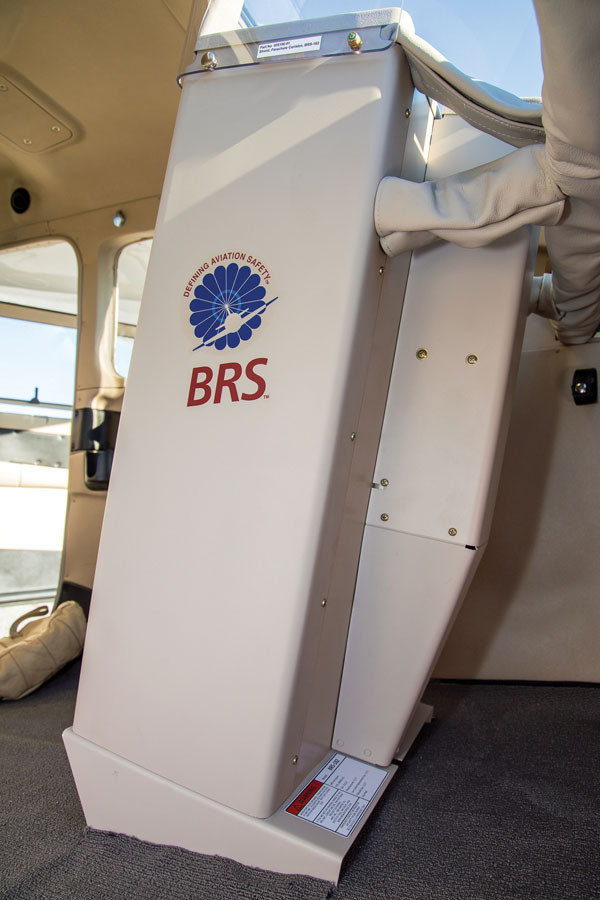

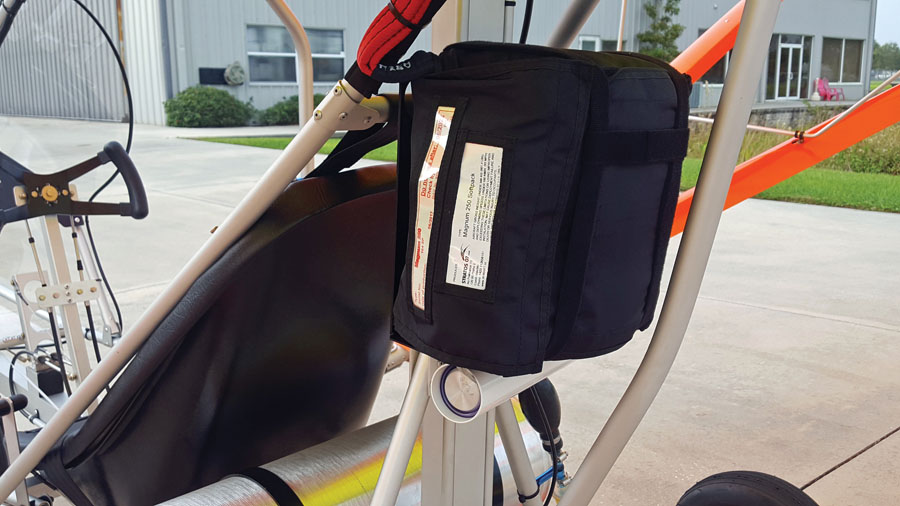
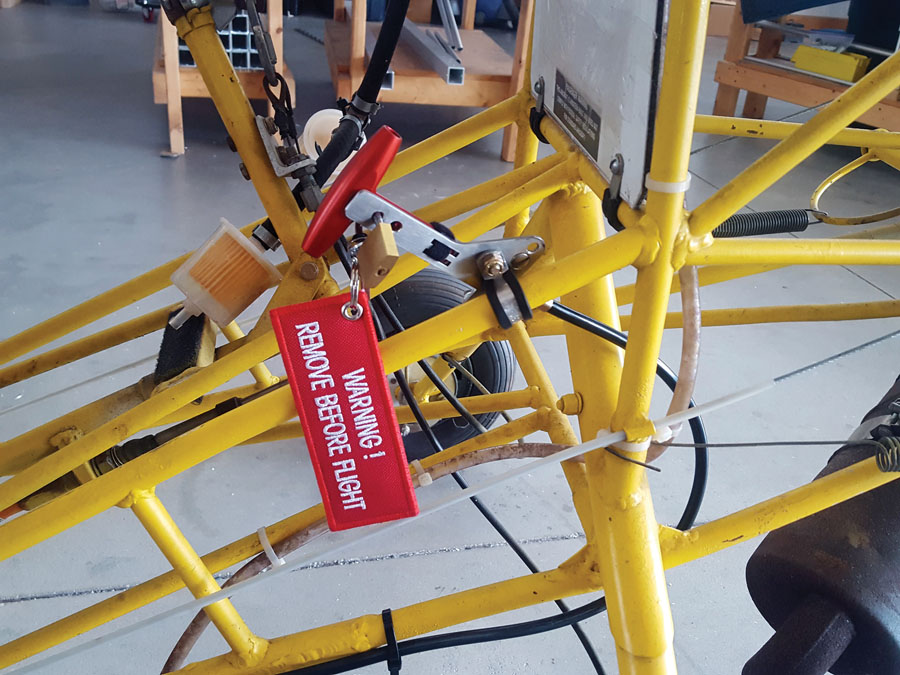
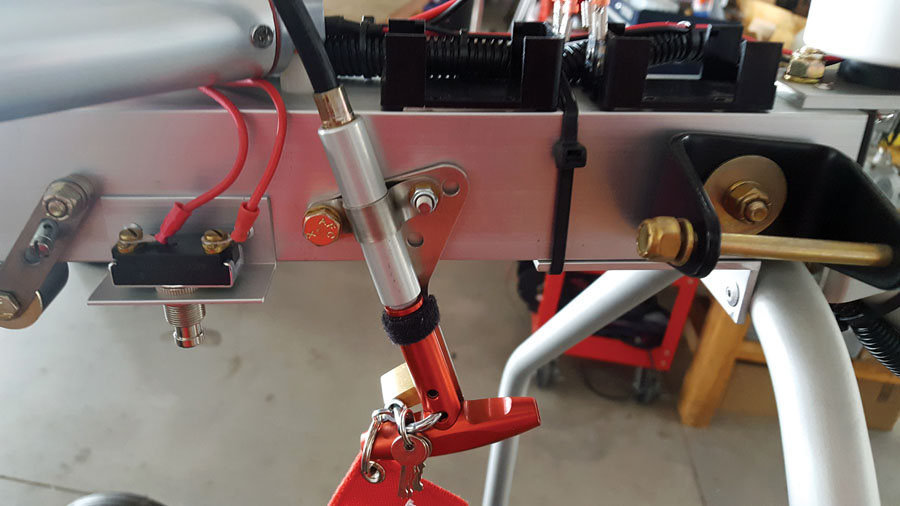




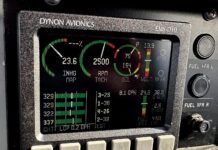

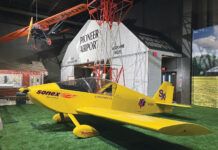
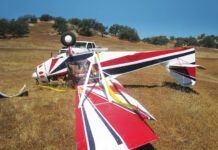
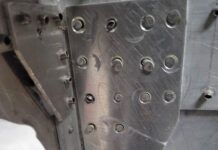

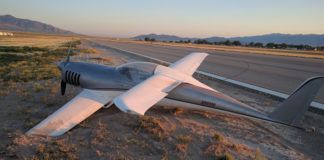

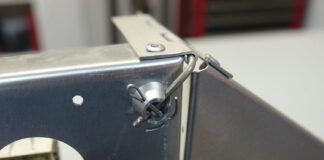
Checking for my son, what is the cost for a small experimental aircraft? Roger Moore
Roger,
It depends on what your son wants. The choices are almost limitless. Ready to fly or assemble? Ultralight or two-place? You’re reading the right magazine.
Lisa
Roger, I have the same aircraft as Lisa – a Kolb MK III Xtra. I ordered my BRS on January 4th of 2023. They quoted me an 8 month delivery time. 1/2 down ($4,200), the remainder due at shipment. So, $8,400 or so for this particular light sport, but every airframe will be different. The folks at BRS are incredibly helpful! Yep, long lead time, but what’s that worth in potentially saving your life?! I had installed a 2nd Chantz chute in my Hiperlite. Never used it thankfully, but it was a great comfort knowing it was always available!
Dear General Aviation Enthusiasts:
Due to a personal loss, I’m in the planning stages of a charity to offer plane builders or owners subsidies to install whole airplane recovery chutes in their builds or r existing planes.
I’d welcome your thoughts.
Sincerely,
William F. Swiggart
[email protected]